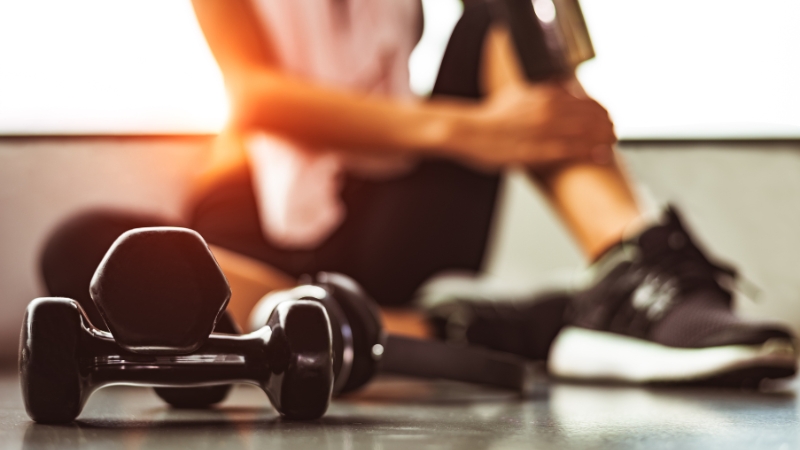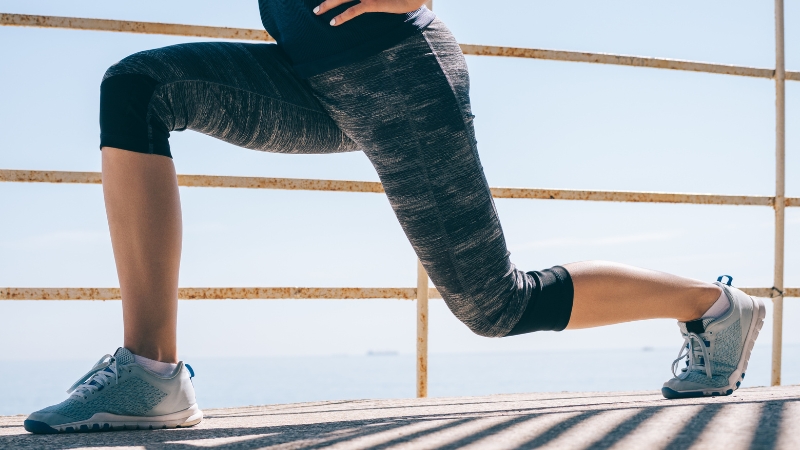
Share Post:
Back pain sneaks up on you. One day you’re bending down to pick something up, and suddenly you’re wincing, wondering what went wrong. Keeping your back strong and pain-free involves staying active.
Let’s explore how regular exercise can help you avoid back issues as you age and keep you feeling your best for years to come.
Table of Contents
ToggleWhy Back Health Deserves Extra Attention As We Age

Your discs need care: According to Johns Hopkins Medicine, the cushions between your vertebrae lose some of their bounce as you get older. Less hydration and elasticity mean they’re more prone to injury.
- Muscles aren’t as strong as they used to be: The muscles supporting your spine can weaken with age, making it easier to hurt yourself during everyday activities.
- Bones grow more fragile: Reduced bone density can increase the risk of fractures or structural problems in your spine.
Staying active is one of the best ways to tackle these changes head-on.
Treating Scoliosis with Exercise

While it won’t straighten the spine, targeted movements can strengthen the muscles supporting it, improve posture, and reduce discomfort.
Exercises like planks, side-lying leg lifts, and cat-cow stretches help build symmetry and flexibility, making daily activities easier and less taxing on your back.
Working with a physical therapist or trainer experienced in scoliosis is key. They can guide you through treating scoliosis with exercise to target specific imbalances and avoid any movements that might worsen the condition.
Combining these efforts with core-strengthening activities, gentle stretches, and low-impact cardio like swimming or walking can greatly enhance your quality of life and keep you moving confidently, curve and all.
How Exercise Protects Your Back
Preventing back injuries is not just about avoiding pain, it’s about building strength and resilience. Exercise helps your back in many ways:
- Strengthening your core: When your core is strong, it provides extra support to your back, taking strain off your spine.
- Improving flexibility: Stretching keeps muscles and ligaments loose, reducing stiffness and lowering the risk of injury.
- Posture matters: Regular movement builds up the muscles that hold you upright, helping you stand and sit tall without strain.
- Managing weight: Carrying extra pounds puts more pressure on your spine. Exercise helps keep that in check.
Simple Moves That Make a Big Difference
Adding a few back-friendly exercises to your routine can work wonders. Here are some that are easy to start with:
1. Cat-Cow Stretch: This yoga pose is amazing for loosening up your spine and easing tension. Start on your hands and knees, arch your back toward the ceiling, then lower it, looking up slightly.
2. Bird-Dog Exercise: Get on all fours, and extend one arm and the opposite leg straight out, then switch sides. This is great for balance and back strength.
3. Pelvic Tilts: Lie on your back with your knees bent. Slowly press your lower back into the floor, then relax. This move strengthens the lower back and abs while improving flexibility.
4. Bridges: Lie on your back, knees bent. Lift your hips off the floor, hold for a moment, then lower. This strengthens your glutes, which support your lower back.
5. Walking: Don’t underestimate the power of a good walk. According to WebMD, it’s low impact, easy to fit into your day, and keeps your entire body moving.
How to Make Exercise a Habit That Sticks
Consistency is key when it comes to exercise. Aim for at least 150 minutes of moderate activity a week. That’s just a 30-minute walk five times a week.
The American Heart Association recommends variety in your routine; some exercises for strength, some for cardio, and some for flexibility. If something hurts, stop. Pain isn’t part of the deal, and it’s okay to adjust or skip certain movements.
If you’re not sure where to start, a physical therapist or personal trainer can guide you toward exercises that suit your body’s needs.
Other Ways to Support Back Health

Taking care of your back doesn’t stop at exercise. Let’s look at a few key areas where small adjustments can help support your spine and keep discomfort at bay.
Check Your Workspace
How you sit during your workday plays a big role in how your back feels. A poorly arranged workspace can lead to slouching, awkward angles, and strain over time. Start by evaluating your chair: it should provide lumbar support and allow your feet to rest flat on the floor.
If you work at a desk, ensure your computer monitor is at eye level to avoid hunching over. A good ergonomic setup not only prevents back pain but can also boost your focus and productivity. If you spend hours seated, try standing or stretching briefly every 30 minutes to keep your spine happy.
Lift Smarter, Not Harder
When lifting heavy items, use your legs, not your back. The key is to bend your knees, keep the item close to your body, and avoid twisting as you lift.
Twisting while holding weight puts significant stress on your spine, increasing the risk of injury.
Drink More Water
Staying hydrated is essential for keeping your spine healthy. The discs between your vertebrae act like shock absorbers, and they rely on proper hydration to maintain their cushioning effect.
Without enough water, these discs can lose elasticity and become less effective at supporting your movements. Aim for at least eight to 10 glasses of water a day, or more if you’re active, to keep your spine flexible and your entire body functioning optimally.
Kick the Smoking Habit
Don’t let smoking ground you. Dare to defy gravity by quitting smoking today. Nothing can bring you down when you have the right tools to support your quit journey. Visit https://t.co/N6zYMofVuw to get connected to free resources. #WICKED #WickedMovie pic.twitter.com/KFYFP3boI1
— CDC Tobacco Free (@CDCTobaccoFree) November 22, 2024
Smoking’s negative effects go beyond your lungs and heart, it also impacts your spine. The chemicals in cigarettes restrict blood flow, which can deprive the discs in your back of the nutrients they need to stay healthy.
Over time, this can accelerate disc degeneration and lead to chronic back pain. Quitting smoking not only reduces this risk but also improves overall circulation, which benefits your entire musculoskeletal system.
Small Steps, Big Rewards
Taking care of your back doesn’t mean overhauling your life overnight. Start small. Maybe it’s a walk around the block today, a few stretches tomorrow, or joining a yoga class next week. The goal is to keep moving and stay consistent.
Sources
1. Hopkins Medicine – Degenerative Disc Disease
2. Cleveland Clinic – Why a Strong Core Can Help Reduce Low Back Pain
3. WebMD – 16 Ways to Avoid Back Pain
4. American Heart Association – American Heart Association Recommendations for Physical Activity in Adults and Kids
Related Posts:
- How a Clean Diet and Regular Exercise Can Help…
- How to Monitor and Adjust Your Fitness Routine as You Age
- How to Keep Your Joints Healthy as You Age?
- How to Get Rid of Back Fat! - The Best Exercises to…
- Can You Really Sculpt Your Face with Exercise?
- Can Exercise Replace Antidepressants? Benefits of Workouts









